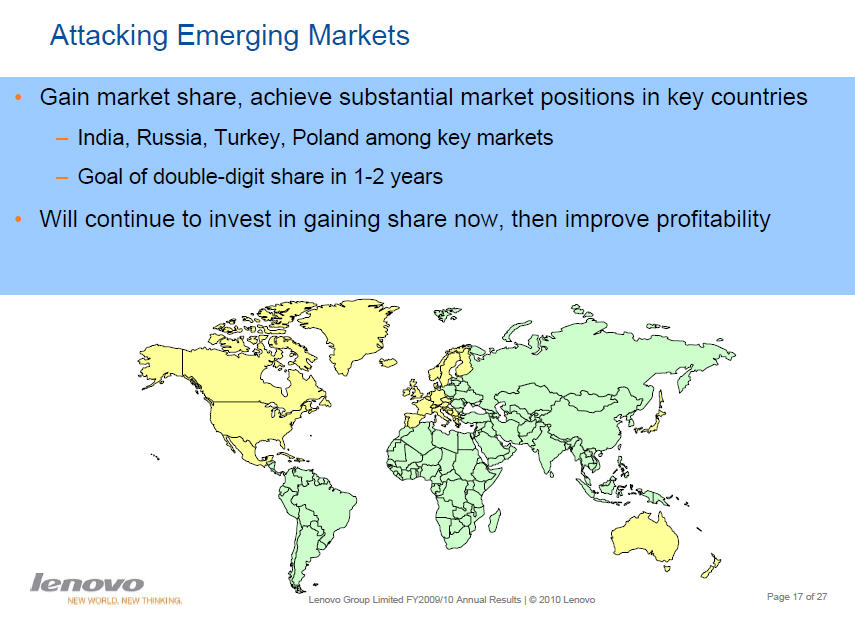Cisco, IBM, tech giants covering the BRIC bases

Cisco Systems plans to invest $1 billion in Russia. IBM opens a research facility in Brazil. HP talks about its supply chain in China focusing the local economy as well as the rest of the world. Lenovo's big plan is to grow in emerging markets while defending its corporate turf in the U.S. The common theme: Every tech player is gung ho for BRIC.
BRIC, an acronym that stands for Brazil, Russia, India and China, is tossed around a lot of earnings conference calls. Why? That's the future for IT giants. And with earnings season right around the corner rest assured that the talk about BRIC is just getting warmed up.
IBM's CEO Sam Palmisano summed up the appeal of BRIC and other emerging markets at Big Blue's May analyst meeting:
When a middle class emerges and you have a lot of money, like a China or an India, or portions of Eastern Europe, guess what you do? You add infrastructure. And that is called banks and wireless infrastructure and retail operations. And they consume, they buy goods. That creates lots of demand for the kinds of things we do, both for the enterprises themselves, the banks, the telcos, the retailers, as well as the governments, who are being pressured now to provide services for that society as this middle class emerges. What's the services? Healthcare, those kinds of services. Clean water in some of these places. Roads that are stable without potholes. Basic things -- smart transportation, those kinds of things, if you want to think about it. That is what is going on there.
Speaking about Cisco's investment in Russia, CEO John Chambers had a similar theme:
Cisco is aggressively hiring talent and investing in innovation as we capture market transitions. Our approach is to grow jobs and investments aligned with the growth and opportunity in our business, here in the United States and globally where we see countries investing in education, infrastructure and innovation. Russia is clearly doing just that, which for Cisco represents an opportunity to grow our global business and our innovation platform.
HP recently detailed its supply chain overhaul and noted that it is in all four BRIC countries. Its Western China manufacturing facility is focused on products for that country.
The list goes on an on. Dell, Lenovo and many other players talk BRIC. Here's Lenovo's money slide from its most recent quarter:
The general theme: Put assets in emerging markets and view them as growth engines. There's also an acknowledgement that you have to be in the BRIC countries to be a local economy player. IBM appears to be putting its R&D money with where the emerging markets are. Before the opening of the Brazil research center, IBM's last R&D opening was 12 years ago in India. With the addition of a research facility in Brazil---designed to innovate in everything from natural resources technology, transportation and logistics, infrastructure and clean technology---Big Blue will have multiple emerging markets covered.
IBM has research facilities in the following emerging markets:
- Brazil
- China
- India
- Israel
- Japan
- Switzerland
- United States
The company has a development lab in Russia but doesn't have a research lab there.
What's notable about the BRIC approaches is that tech giants all have a unique spin. Lenovo is looking to replicate its China success in other young markets, but the focus is solely on selling hardware. IBM is looking to create a virtuous cycle between research, services and innovations that can scale. Cisco sees Russia as an incubator for innovation and internal startups. HP sees emerging markets as an end market and a supply chain play (made in China for the China market). All of the tech giants see BRIC countries as a nice way to play labor arbitrage.
While the approaches to BRIC vary the general theme is the same. The future of enterprise IT growth lies outside the U.S.
